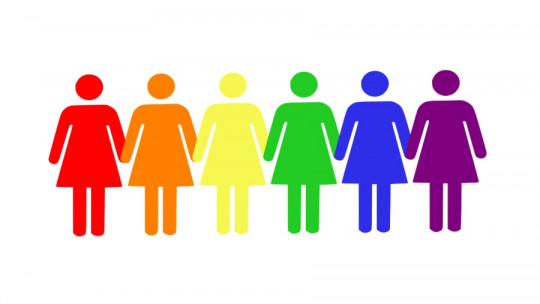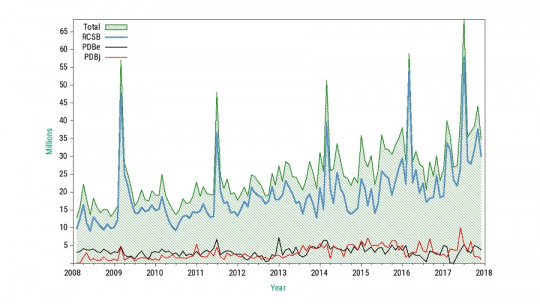We often use the terms equality and equity as synonyms, or we think that they mean the same thing but with nuances. However, they are different ideas with different implications at the social level.
Although both terms are dimensions of social justice, The truth is that there are differences between equality and equity which we are going to see in more depth throughout this article.
Differences between equality and equity: how to distinguish between both concepts?
The words equality and equity are usually found together, so it is not surprising that many people tend to confuse them, thinking that they either mean exactly the same thing or have a similar definition with certain nuances. Actually both words They refer to concepts that, although related, do not imply the same thing and, in fact, at a social level they imply different consequences.
What is equality?
Equality implies treat all people equally before the law , without discriminating or offering privileges to anyone. That is, equal treatment is one in which everyone is given the same thing regardless of their differences such as gender, race, socioeconomic status or any other differentiating characteristic.
Equality is a human right and is established in the Universal Declaration of Human Rights of the United Nations in 1948. In that declaration, sovereign states undertake to offer their citizens equal treatment before the laws, both to access their rights and to enforce their rights. obligations.
What is equity?
Equity is understood as the principle or disposition to give everyone the same treatment before the law, without discrimination, but considering their specific situation and needs That is to say, within equity there would be the idea of equality, but taking into account that not everyone has the same luck and that, sometimes, offering the same treatment is still unfair to the most unfortunate people.
In the idea of equity The aim is to be fair or to impart justice, but taking into account that everyone is different both for good and bad, and that human beings, although deserving of the same rights, have individual needs or live in different situations, in which specific treatment is necessary.
The case of the baseball game
To clearly see the differences between equality and equity, We are going to use as a graphic example an image that has become very popular in recent years , which allows you to very quickly understand these two ideas and how they differ. The image, popularized by social networks, is that of three people of different heights trying to watch a baseball game behind a fence. There is a tall person, a medium-sized person, and a small-sized person.
At first, and without having any type of help or support, the only person who manages to see the game is the tall one, given that her height exceeds that of the fence. The average person has difficulties and has to stand on tiptoe to grasp something, although he cannot. The most unlucky is the short person, since they cannot even see anything of the game from tiptoe. This first situation represents social injustice when there is no intervention
Next, we have an image that tries to represent equality. Someone has given these three people three identical wooden boxes, one for each of them to stand on. The tall person is now even further above the height of the fence, while the medium-sized person finally gets a good look at the game. Unfortunately, the short person, although he has stood on top of his box, cannot see anything: he has not been given enough to be able to be at the same height, even though the treatment has been equal.
Finally, we have the image that represents equity. In this case, it is taken into account that The three people are not equal, although they have the same right to watch the game To ensure that they can see it, boxes are distributed, but they do not touch one for each one. The tall person does not need any box, since he already watches the game without help. The medium person will need one box to see it, but the short person needs two boxes to get it.
Now the three people can enjoy the game because they have put themselves on the same level. It is true that the distribution of boxes has not been the same, because one has received more boxes than the other two. However, given that the result is the same, that all three people can watch the game from the same height, it is a measure that contributes to social justice, since everyone receives the same right, in this case watching the baseball match.
Based on this example, we can understand that The main difference between equality and equity is that the former involves providing justice to all citizens uniformly , while the second aims to treat everyone fairly, but taking into account their differences and exceptional situations. In equity, the sense of impartiality is not compromised, but it is understood that not everyone is born equal and, therefore, too equal treatment would imply social injustice.
Examples of equality
Below we will see some examples of equality, widely mentioned in social movements and promoters of the defense of human rights.
Gender equality
Gender equality is an idea that defends the equivalence of men and women in the enjoyment of the same rights That is to say, one is against having one gender or another as a reason to enjoy privileges and be a victim of discrimination. Gender should not be an impediment to having access to the same opportunities.
This idea is contemplated in the Declaration of Human Rights, in addition to having been defended in other documents, such as the Convention on the Political Rights of Women (1954) and the Convention on the Elimination of all forms of discrimination against women ( 1979).
Equal opportunities
Equal opportunities is an idea that states that All human beings should have the same opportunities to develop comprehensively
Although in theory all states, or at least those that are considered democratic, try to apply this type of equality, the truth is that in practice it is more difficult to exercise. There are social inequalities that prevent us all from being able to start from a common base.
For example, those who have been lucky enough to be born into an upper-middle-class family are more likely to enjoy a good education, receive revision if they do not perform academically, and be able to afford university studies, both bachelor’s and master’s degrees.
Instead, A lower class person, even if he or she has the same cognitive ability, cannot afford the same type of education if you have difficulties you may not receive the necessary help and, even if you are worth it, you will not be able to afford university studies.
In the case of the upper-middle class person, having had a very privileged life compared to the lower class, it is predictable that they will get a good job, either by inertia or by their effort. On the other hand, the other will not have this luck.
Social equality
Social equality is an idea that refers to be able to enjoy all civil, economic, political and legal rights Within this equality we would have rights such as being able to have a house, being able to have a salary, having the right to vote and participate in politics, being equal before the law…
Examples of equity
Below we will see some examples of equity.
Gender equality
Gender equity is a concept that is related to gender equality, but, although the common objective is that men and women can enjoy the same rights, in gender equity the choice is to give preferential treatment to women while, traditionally, they have been the discriminated gender.
So we would talk about equity offer interventions aimed exclusively at women so that they can have the same social, economic, political and legal weight as men.
For example, gender equality is achieved when women are promoted and facilitated to enter the workforce, given the opportunity to reach high positions and fight against the glass ceiling.
Social equity
Social equity is understood as the set of measures that are applied to guarantee that all people have access to the same opportunities taking into account their different circumstances.
For example, All children have the right to education, considering them equal before the law in this regard That is to say, whether you live in the countryside or in the big city, all boys and girls have this right recognized. The problem is that recognizing the right does not mean that people can enjoy it.
Although in developed countries the rural-urban dichotomy in terms of education is greatly overcome, making it possible for those who live in rural areas to go to school with relative ease, in underdeveloped countries this is not the case. Living in the countryside means having many difficulties getting to school, since the closest one is most likely in the city, and it is not easy to get there.
To ensure that all boys and girls go to school, it is not enough to recognize this right. Should be mobilize the necessary resources so that people who live in less favored environments, in this case the countryside, can go to schools Two good measures to achieve this goal would be to build more schools in rural areas and enable school transportation so they can go to class.









